Like it or not, the notch is among us and it seems for the foreseeable future. It all began with the Essential Phone back in May 2017 and later popularized by Apple’s iPhone X towards the end of the year. Recently, it went viral in the Android fraternity thanks to Huawei, the third-leading smartphone vendor in the world.
While big-name Android vendors like Huawei, Oppo, Vivo, LG, and other notable mentions like OnePlus and Asus have fallen for the notch, there are quite a good number of unhappy people in the Android camp. These are the people who simply want nothing to do with the notch because they see it as a stupid idea. Despite the shifting market dynamics, there are still companies out there that have this group in mind.
With almost every other new Android phone set to come in with the notch, this post takes a look at the best new Android phones without the notch, a design that is increasingly looking to become a rarity this 2018 and beyond.
Best Android phones with no notch [June 2018]
Samsung Galaxy S9 and S9+
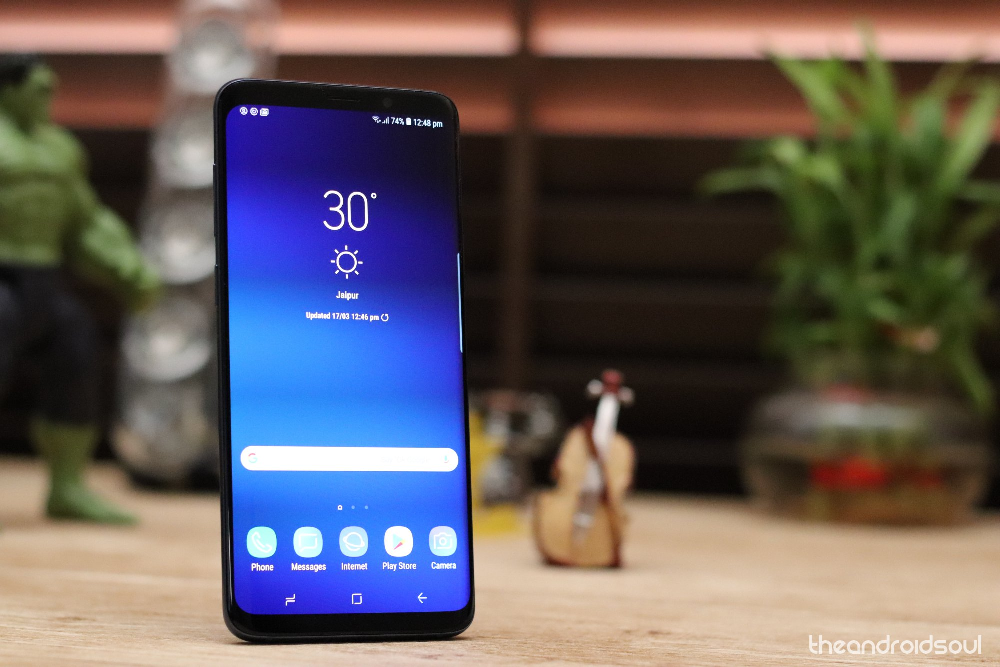
Besides being the best Android phones available on the market right now, the Galaxy S9 and S9+ also happen to be without the notch. Samsung doesn’t seem keen to embrace the notch thing and it’s good for Android and the smartphone industry in general.
The pair manages to deliver a familiar package that features curved edges and an Infinity Display with an aspect ratio of 18.5:9, nearly identical to the 18.7:9 on the Huawei P20 Pro, but without the dreaded notch. Being flagship phones, you also get powerful hardware, top of the line features, great photography and the latest software. Check out the Galaxy S9 and S9+ specs below.
Check out: Best AT&T Android phones
Note that this list is only considering the best new Android phones without the notch, but if the prices of the Galaxy S9 and S9+ scare you, there’s more to check out from Samsung, led by the Galaxy Note 8.
Although a little older, Samsung’s Galaxy Note 8 is simply unbeatable. Thanks to the S Pen, it’ll always remain a unique offering, at least until the Galaxy Note 9 surfaces later this year. Besides the productivity aspect, the Note 8 also happens to be a flagship phone and thus rocks a solid specs sheet and features.
Also read: Samsung Galaxy Note 9 specs, release date, and more
The idea behind the notch is so that phones can have bigger display screens on smaller footprints. Well, the Galaxy Note 8 manages to achieve this without the notch and it’s pretty impressive. Boasting a 6.3-inch QHD+ display screen, the Note 8 is one of the biggest phones you can find around. On the inside, you get a Qualcomm Snapdragon 835/Exynos 8895 processor, 6GB RAM, 64GB storage, 3300mAh battery and a powerful dual 12MP camera on the back.
Also worth looking at are the Galaxy S8 and S8+. Launched last year, you can never go wrong with the S8 pair. These two might be a year old, but they still perform as good as you’d want them. Couple that with their impressive photography, great battery life, beautiful design, the latest Android Oreo software (and a promise to Android P, too) and you have a phone that offers everything but the notch.
Apart from the bigger 6GB RAM, the S8 and S8+ share the same performance specs with the Galaxy Note 8. Even better is that you get a bigger 3500mAh battery on the S8+.
Oppo Find X
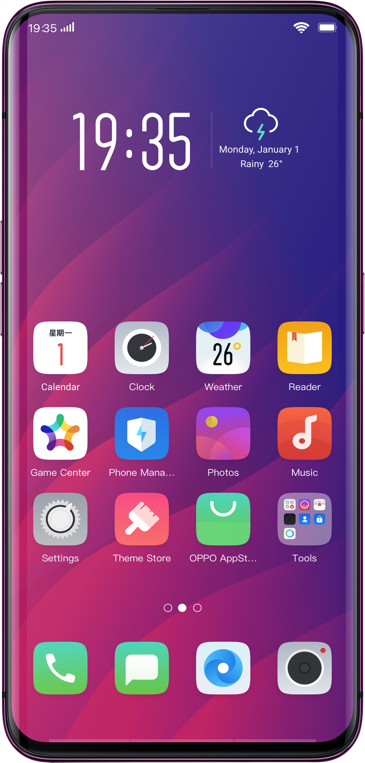
More often than not Chinese OEMs have been labeled as copycats and accused of lacking when it comes to innovative smartphone designs. It is for this very reason we have this post talking about notch-less phones. Like Apple, many companies, including Oppo, have phones with a display notch. And like the Cupertino, Oppo also has other phones with no notch, the latest of them being the Oppo Find X.
By far the most innovative smartphone of the moment, the Oppo Find X has a slide-out top that houses the front camera, 3D face ID, sensors, and other stuff usually found in the notch or top bezel for that matter. This same slide-out top also houses the main camera and LED flash, making up for a pretty interesting piece of hardware.
Being a high-end device, the Find X packs all the bells and whistles you’d expect to find in a device that is here to compete with the likes of Samsung Galaxy S9, LG G7 ThinQ, HTC U12+, and so on.
Also read: Oppo Find X: Everything you need to know
Vivo Nex
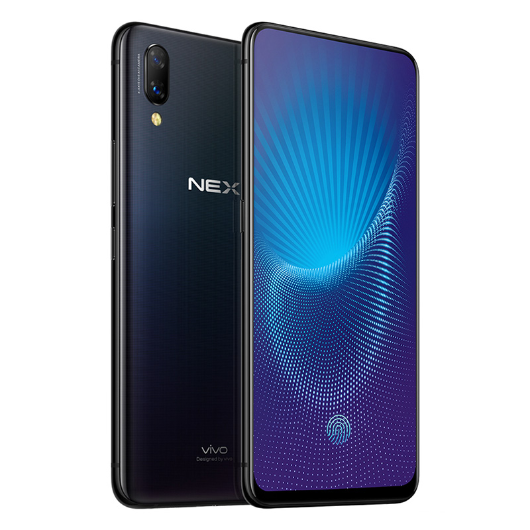 Yet another interesting piece of hardware from China is the Vivo Nex. Similar to the Oppo Find X, the Vivo Nex has a movable top that houses the selfie camera, however, unlike its counterpart, the Nex’s movable part is just a small section that houses the front camera as opposed to the Find X’s entire top moving in and out.
Yet another interesting piece of hardware from China is the Vivo Nex. Similar to the Oppo Find X, the Vivo Nex has a movable top that houses the selfie camera, however, unlike its counterpart, the Nex’s movable part is just a small section that houses the front camera as opposed to the Find X’s entire top moving in and out.
As noted, the Vivo Nex’s slide-out top only houses the front camera, meaning the main camera is still located on the back panel in a position similar to Apple’s iPhone X. However, like its siblings, the Vivo Nex has an in-display fingerprint scanner for authentication purposes. Also, the Nex has a glass-vibrating screen sound casting technology that obsoletes the need for the traditional earpiece.
It’s worth noting that there are two variants of the Vivo Nex. The only major difference is the raw power, where the Nex A is powered by a Qualcomm Snapdragon 710 processor while the Nex S has a Snapdragon 845 running the show. Other than these, the rest of the specs are the same.
Also read: Vivo Nex A and Nex S: Everything you need to know
HTC U12+
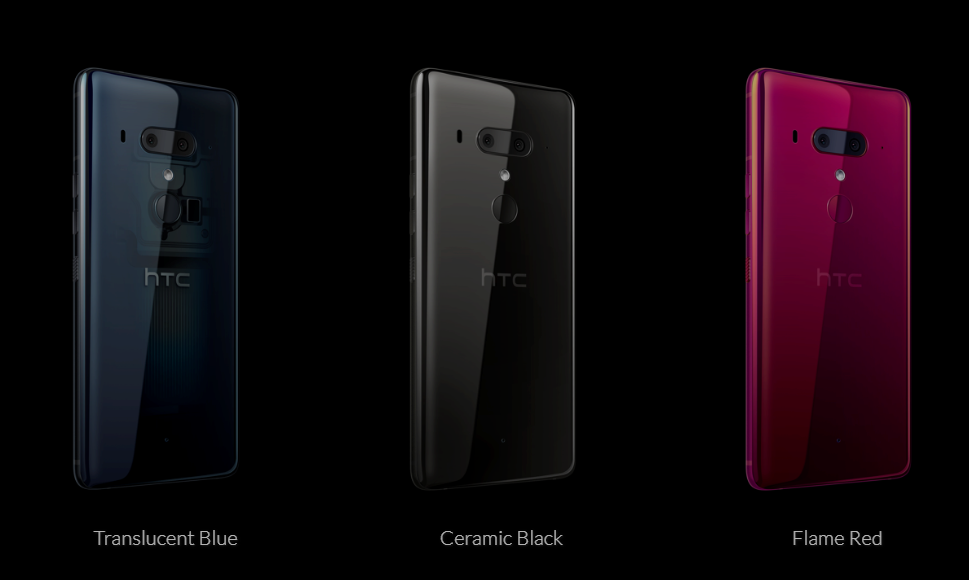
The latest device that is here to try and save HTC’s dwindling smartphone business is the HTC U12+. No, there’s no non-plus variant and indeed, you are getting a plus-sized device with a massive 6-inch QHD+ display screen, but unfortunately, HTC is still giving you an LCD panel, for some reason.
The HTC U12+’s see-through design is out of this world (Xiaomi recently launched something similar with the Mi 8 edition), but it’s the choice to offer four cameras that makes the U12+ even more interesting. Unlike Huawei P20 Pro that also comes with four cameras, the U12+ has two on the back and two on the front.
The squeezable edge thing is still in place and HTC has even bumped it to version 2.0, meaning you are getting even more ways to interact with the device and plenty of other tricks.
Also read: HTC U12+: Everything you need to know
Xiaomi Mi MIX 2S
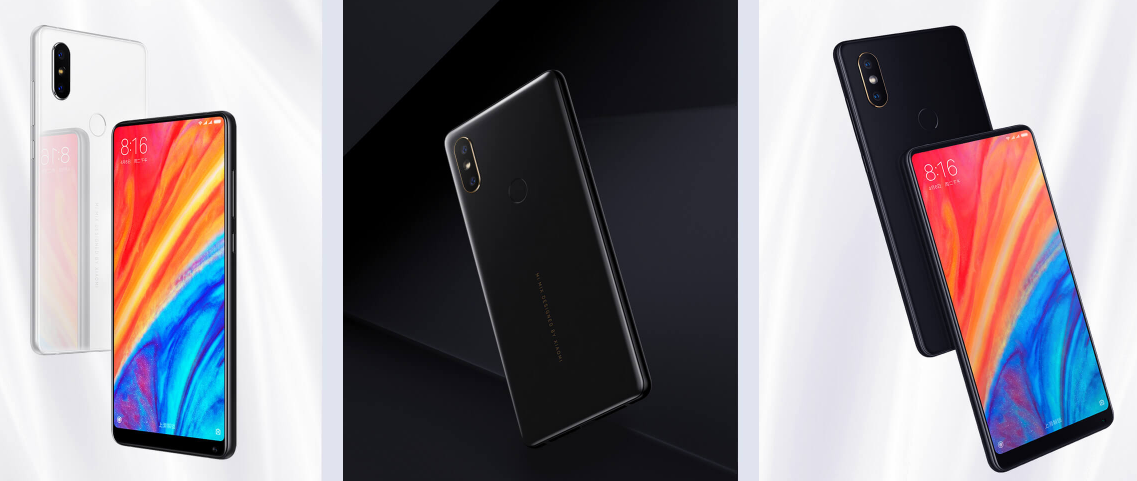
Xiaomi rarely gets credit for making bezel-less display screens mainstream. The company debuted the Mi MIX in 2016 with a bezel only on the bottom side. The phone has since been followed up by two more releases – the Mi MIX 2 and recently, Mi MIX 2S, the latter of which is our subject.
The Mi MIX 2S keeps the same design language as the Mi MIX, only that it’s more refined and more compact to match the current standards. Rather than the notch, you get a chin on the Mi MIX 2S, which actually does the same job as the notch – it houses the front-facing camera.
Like any other 2018 high-end phone, the Mi MIX 2S packs the latest hardware and features too, picking up from where the OG Mi MIX 2 left off by adding a dual-lens camera on the back, a more powerful Snapdragon 845 chipset, and the latest Android 8.0 Oreo out of the box, among other tweaks. Check out more details below.
Check out: Best Verizon Android phones
LG V30S ThinQ
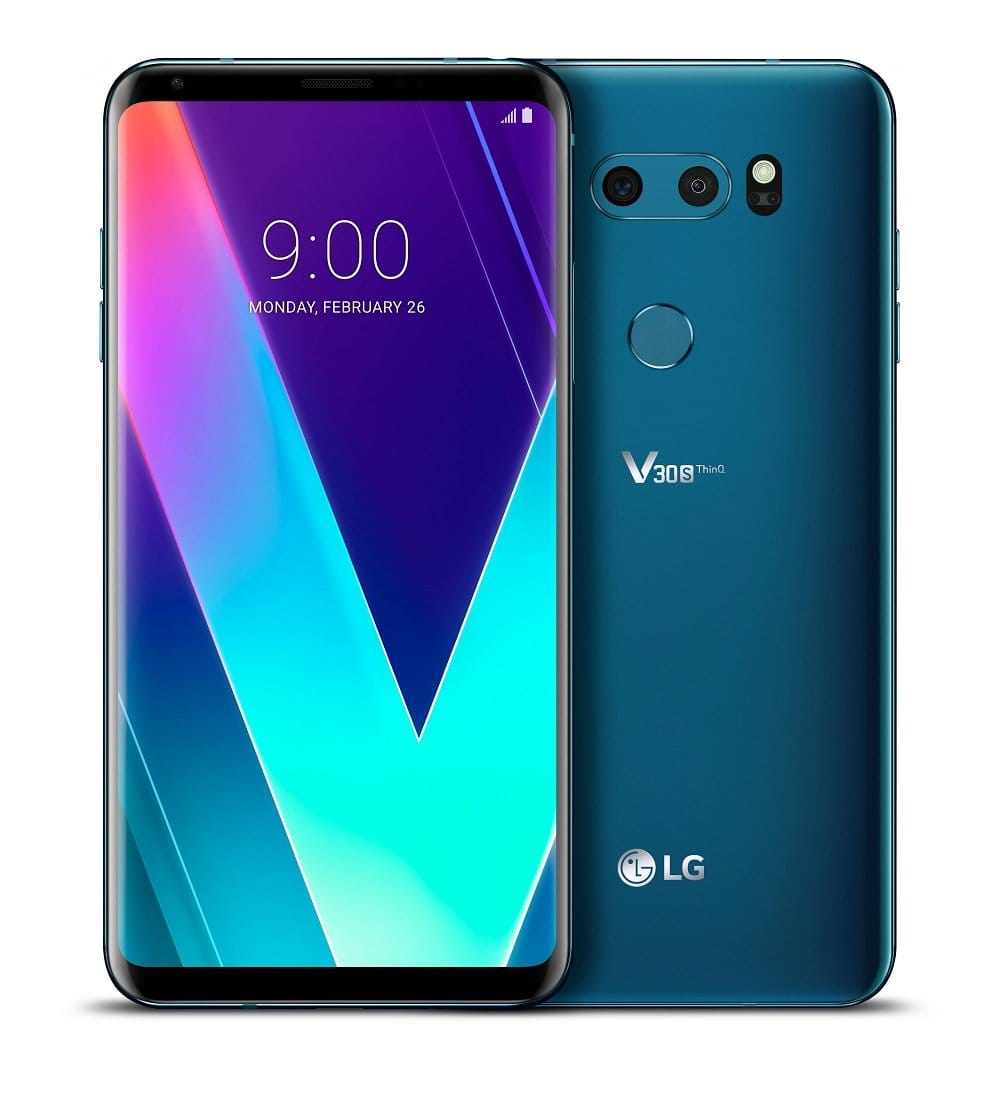
LG was at the MWC 2018 not to launch a new phone, but to unveil a revamped version of the 2017 LG V30. Dubbed LG V30S ThinQ, this phone is simply a repeat of what happened last year, where LG unveiled the G6 with older hardware and sold it as a 2017 flagship phone.
That being said, the LG V30S ThinQ is one of the only worthy alternatives you have if you want nothing to do with the notch. Although technically a 2017 phone, the V30S ThinQ has a few tricks up its sleeve thanks to the AI-based ThinQ – features that are also making their way to the older V30 and even the G6.
Despite keeping all there is on the LG V30, the V30S ThinQ gets Android Oreo out of the box, which is a nice gesture from the Korean company. Check out the specs, features, and availability details below.
Nokia 8 Sirocco
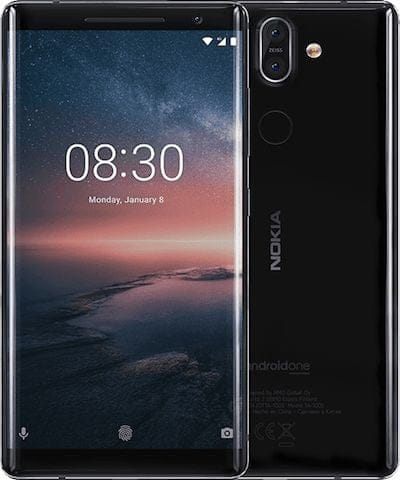
Another phone that also rides on the success of the 2017 Snapdragon 835 is the Nokia 8 Sirocco. Other than the older chipset and 16:9 display aspect ratio, however, the Sirocco has everything else you’d want to find in a 2018 flagship phone.
The design of the Sirocco reminds me of the Galaxy S7 Edge and while HMD does everything to match the latest design aesthetics, it’s nowhere near the likes of Samsung Galaxy S9 and S9+. Still, you get a dual-lens camera on the back alongside all the latest features, and even better is that Nokia 8 Sirocco runs pure Android Oreo out of the box with a promise of up to three years of software updates thanks to Android One.
Unfortunately, this might be the only high-end Nokia phone to buy this year that has no notch. The company may have caved in and soon we could see a Nokia flagship phone with a notch. Check out the link below for more on the Sirocco.
Also read: Nokia 8 Sirocco: Everything you need to know
Samsung Galaxy A8 and A8+
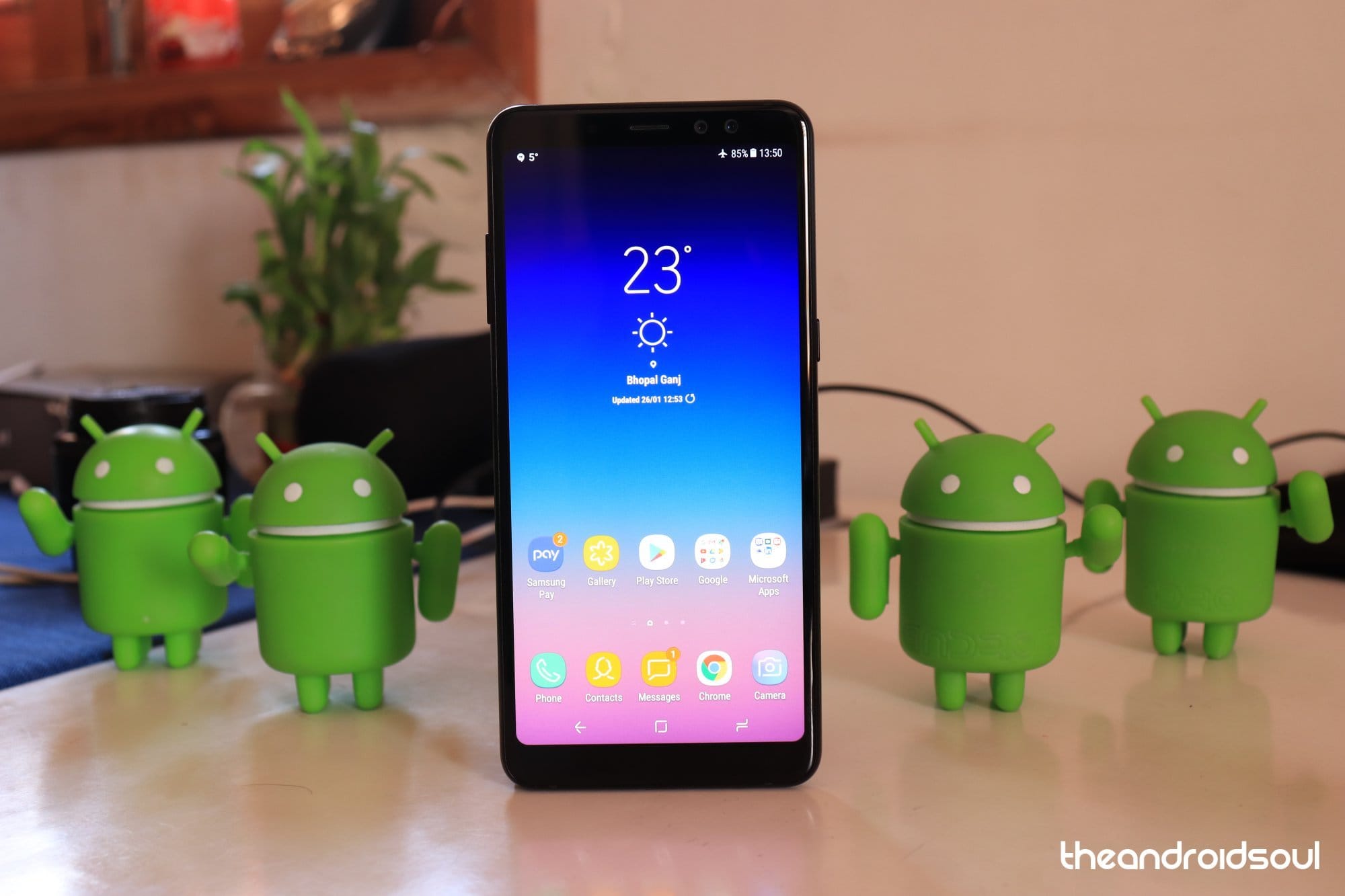
Announced in January 2018, these two attempt to close the gap between midrange and high-end phones by offering the latest Infinity Display design with an 18.5:9 aspect ratio, huge Super AMOLED display screens, powerful specs under the hood that include up to 6GB RAM as well as a dual-lens camera for selfies.
Despite all the Galaxy A8 and A8+ bring to the table, they come preinstalled with Android Nougat and even though we know they’ll be upgraded to Android Oreo, it’s this wait that can become frustrating at some point. Also, the A8 and A8+ from Samsung have pretty steep asking prices, but this is just the price you have to pay to get a notch-free display screen.
Check out: Samsung Galaxy A8+ review
Nokia 7 Plus
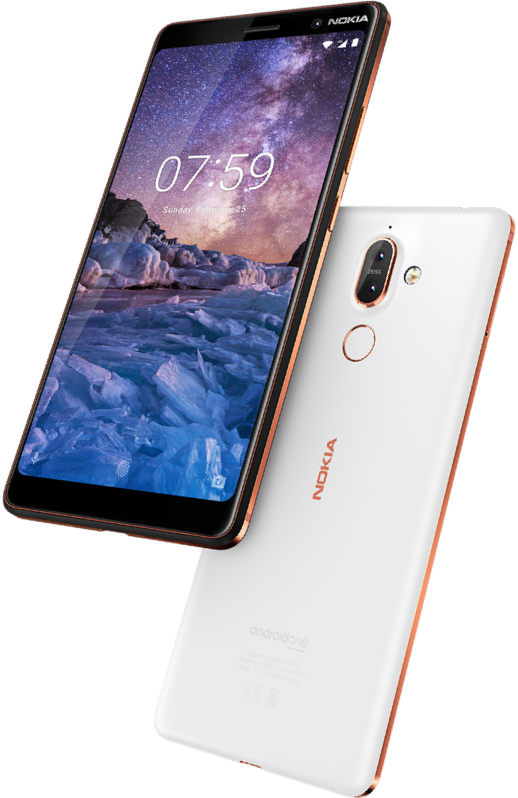
In addition to unveiling the Nokia 8 Sirocco, HMD also launched the Nokia 7 Plus, which is a superior version of the OG Nokia 7 that never made it out of China. The Plus model, as you’d expect, has a huge 6-inch display screen that also happens to be the first from the company to feature an 18:9 aspect ratio.
On the inside, the Nokia 7 Plus is no joke either. It rocks the powerful Snapdragon 660 chipset paired with 4GB RAM and for the cameras, you get a Carl Zeiss-backed dual-lens setup on the back. Like any other Nokia phone, the version of Android Oreo installed out of the box is based on Android One, which means plenty of software updates in the next three years. Check out more on the Nokia 7 Plus in the link below.
Check out: Nokia 7 Plus specs, features, and more
Moto Z3 Play
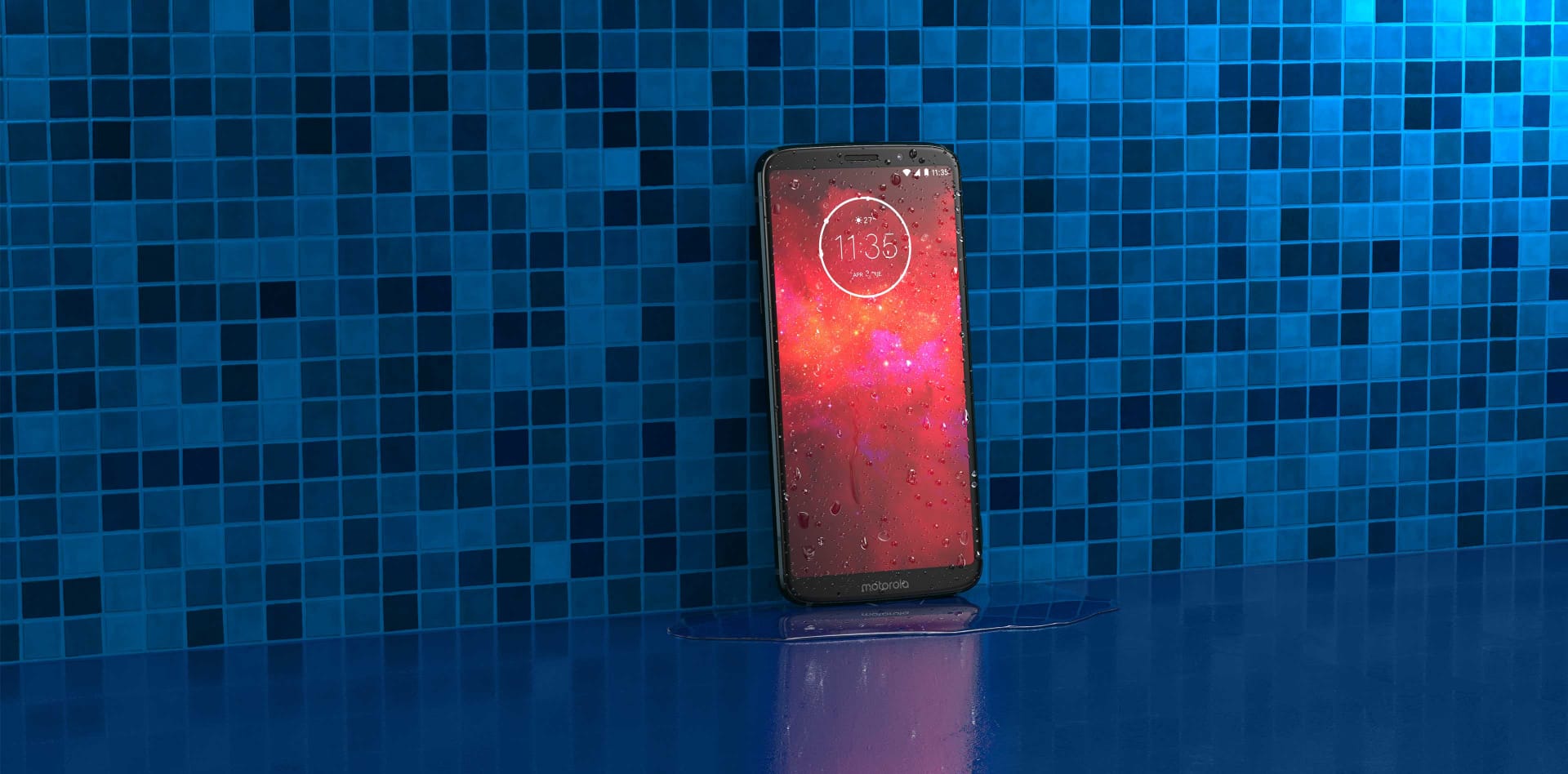
Motorola has updated the Moto Z2 Play with a new Moto Z3 Play handset and like the Moto G6 series, there’s no love for the notch camp. The phone doesn’t stray too much from what we’ve come to associate with the Moto Z series, but of course, you are getting the trending 18:9 Super AMOLED display alongside a faster Snapdragon 636 chipset, a dual-lens camera on the back, a USB-C port and like the high-end Moto Z2, there’s no place for the traditional 3.5mm audio jack.
Check out: Moto Z3 Play specs, price and availability
Moto G6 Plus
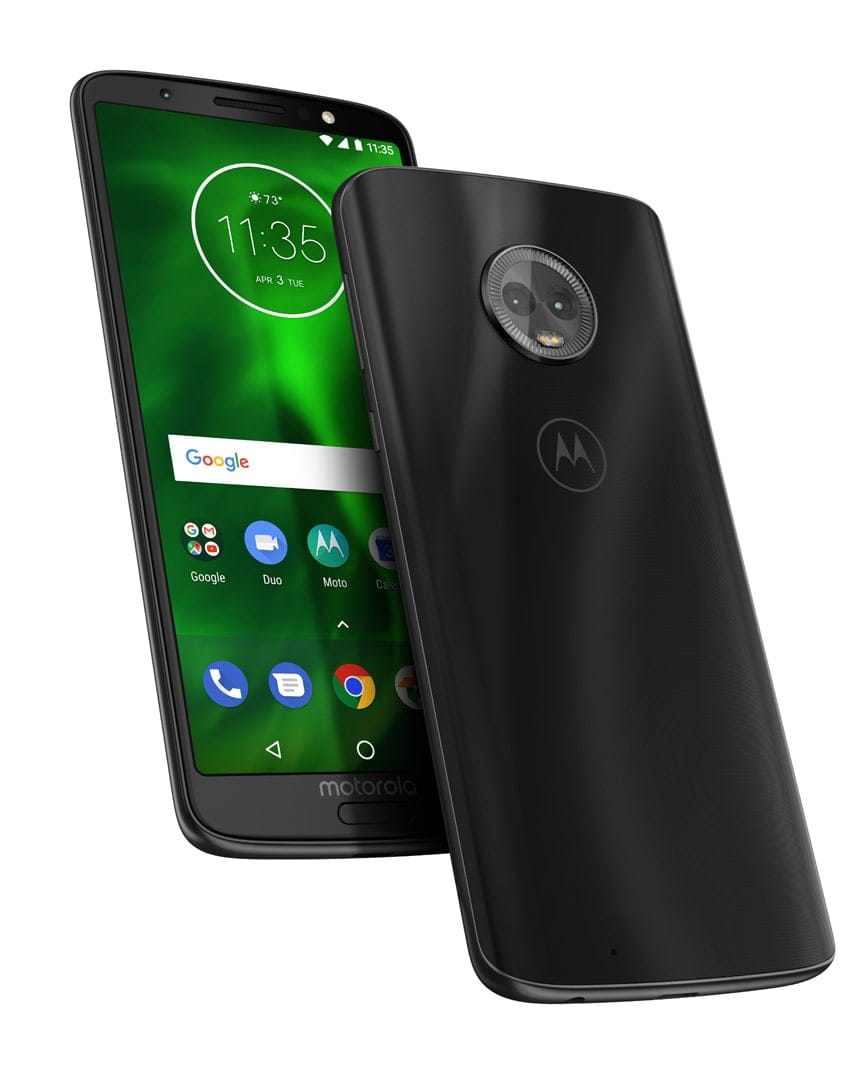 Motorola finally took the wraps off the Moto G6 series and as usual, it seems destined for greatness as far as the budget segment is concerned. Like last year, the Moto G6 Plus is bigger and better than the standard Moto G6 and while you still get the trending 18:9 display designs, there’s no notch on either phone.
Motorola finally took the wraps off the Moto G6 series and as usual, it seems destined for greatness as far as the budget segment is concerned. Like last year, the Moto G6 Plus is bigger and better than the standard Moto G6 and while you still get the trending 18:9 display designs, there’s no notch on either phone.
Even better is that the Moto G6 Plus also ships with a dual-lens camera and has the promise of receiving Android P, yet it also commands a reasonable price tag.
One little problem is that the Moto G6 Plus will not be sold in all markets across the globe. For instance, those in the U.S. can only grab the standard Moto G6, which is not so cool. Check out more on the Moto G6 and G6 Plus below.
Check out: Moto G6 and G6 Plus: Specs, features, and 7 things you need to know
Asus ZenFone Max Pro M1
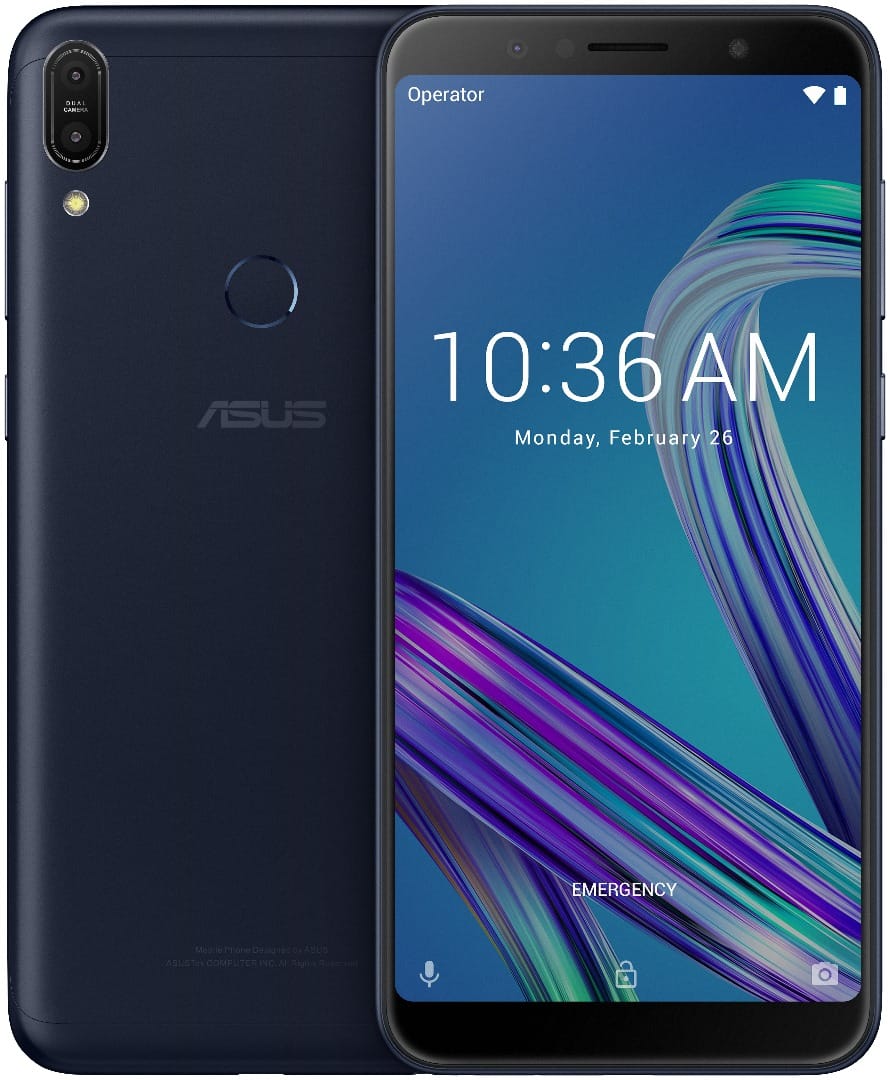
Asus was among the first companies to embrace the notch when it launched the ZenFone 5 series at the MWC 2018, going further to heap praise on its notch as being 25% smaller than Apple’s. However, the Taiwanese company seems to be reserving the notch for its high-end (and midrange) phones, so far, the ZenFone 5 and 5Z.
This is because none of its latest ZenFone Max handsets or even the Lite variant in the ZenFone 5 series has a notch, but they still rock the trending 18:9 design. This is what you get with the latest of them all, the ZenFone Max Pro M1. Three things that make the Max Pro M1 stand out are the Snapdragon 636 chipset, a massive 5000mAh battery, and the fact that it runs on pure Android 8.1 Oreo out of the box.
Even better is the pricing, where it goes for just INR 10,999 in India, approximately $165. You can check out more on Asus ZenFone Max Pro M1 below.
Check out: Asus ZenFone Max Pro M1: Specs, features, and 7 things you need to know
Xiaomi Redmi Note 5 Pro

The Redmi Note 5 Pro was one of the first devices to pick up a few notes from Apple’s iPhone X notebook, however, this had nothing to do with the display screen. Rather than go for the notch, Xiaomi only went for the camera setup where you get a dual-lens camera on the back arranged like on the iPhone X.
Still, the Redmi Note 5 Pro offers the new 18:9 design on its huge 5.99-inch display screen alongside the powerful Snapdragon 636 chipset, a huge 4000mAh battery unit, and a massive 20MP selfie camera, all at just INR 13,999. Check out all the details about the Note 5 Pro below.
Check out: Xiaomi Redmi Note 5 Pro: Everything you should know in one place
Nokia 6 2018
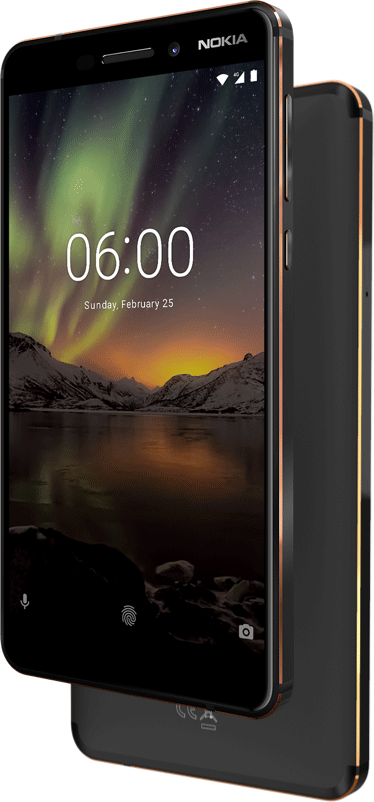
Nokia’s return to the smartphone industry was blessed by the Nokia 6. The phone was a hit, probably because of the nostalgia, but in terms of performance and all, this was a subpar device at its price tag. The good thing is that HMD knew its mistake and rectified it with the launch of the Nokia 6 2018.
Featuring a slightly compact body than its predecessor thanks to the relocated fingerprint scanner, which now rests on the back panel, the Nokia 6 2018 got a much-needed specs bump, where you get a more powerful Snapdragon 630 and up to 4GB RAM, but there’s still no dual-lens camera. Also, the display still offers the old school 16:9 aspect ratio.
The best part is that even after all the upgrades, the Nokia 6 2018 managed to keep the same price tag. Cool huh! In case you haven’t checked out the specs and features of the phone, feel free to hit the link below.
Check out: Nokia 6 2018 specs, features, and more
BlackBerry KEY2
If in the market for something different, the BlackBerry KEY2 is your answer. Besides not rocking a notch, the BB KEY2 also happens to be the only other handset that rocks a physical QWERTY keyboard. Of course, this is besides the outgoing KEYone.
The BlackBerry KEY2 rocks a 4.5-inch display screen and sensors hidden in the bezels and nowhere near the screen. The Canadian company has also managed to come up with a perfect blend of BB-specific features and Android functionality, ensuring a flawless performance whatsoever.
The Snapdragon 660 on board mated with 6GB of RAM promises delivery of optimal performance and even though the KEY2 isn’t everyone’s taste, it’ll sure make you stand out in a crowd of notched phones.
Check out: BlackBerry KEY2 specs, features, and more
Wrapping up
The past few years have seen the demand for big-screen devices escalate, even forcing industry leaders like Apple to cave in and start offering 5.5-inch phones and even bigger. The result of this is that devices have grown bigger in size, making it quite unpleasant to use or even carry around. Unfortunately, the demand for big-screen devices isn’t about to end any time soon.
In order to give consumers big-screen phones as they wish without going past the current physical sizes of smartphones, OEMs have turned to the notch. While it’s unlikely that the entire Android fraternity will turn to the notch, it’s possible most devices from now henceforth will feature the notch.
If anything, it seems the notch is here to stay, at least for the foreseeable future. The good thing is that we have OEMs that have people like me and you in mind.
Do you know of a better 2018 Android phone that has no notch? Let us know in your comments below.

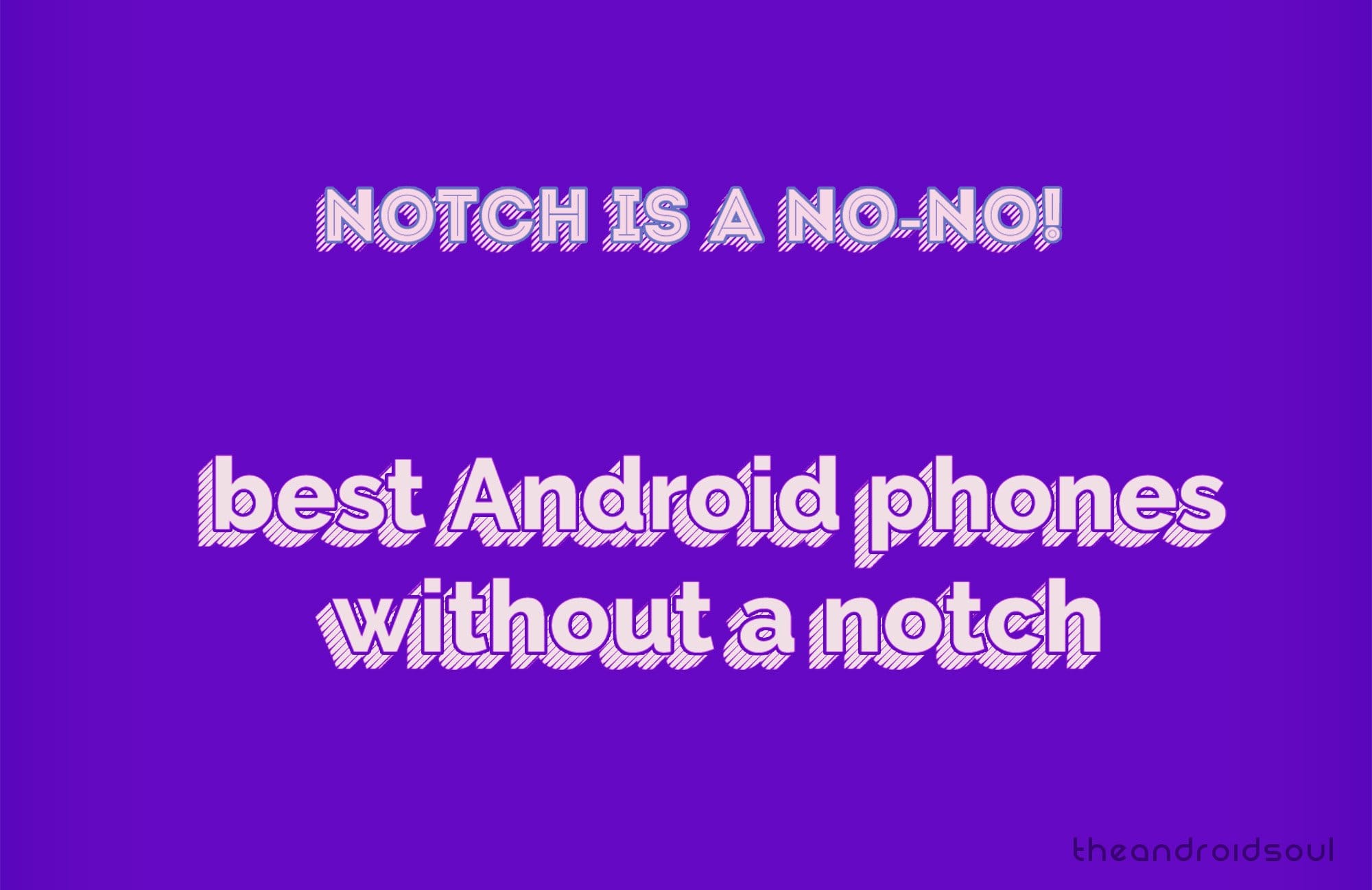






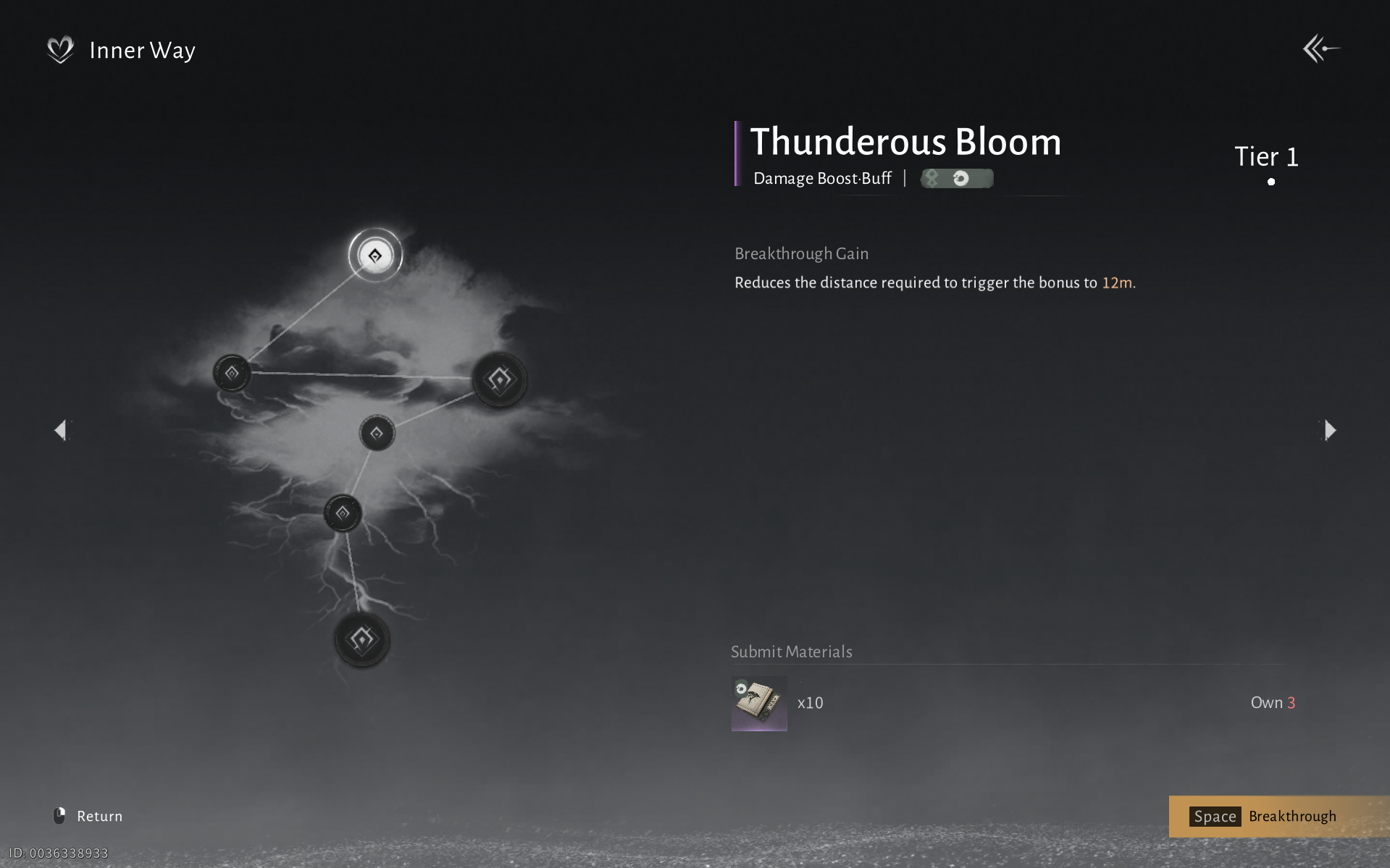




Discussion